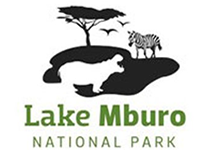| Ankole Longhorn Cattle Herds |
Seen grazing just outside park boundaries, these cattle exhibit exaggerated horn lengths and structured herding practices passed through generations. |
| Bahima Homesteads |
West of Sanga gate, pastoral huts with conical thatch and circular kraals remain intact. Their arrangement reflects both utility and symbolism. |
| Rwabarata Hill Shrine Site |
Traditional Banyankole ritual grounds are near the northern sector. Stones and carved symbols remain visible, though ritual use has declined. |
| Pastoralist Salt Licks |
Shared human‑wildlife spaces where cattle and wildlife converge at mineral-rich earth sites. These areas offer high potential for conservation-culture interaction studies. |
| Handmade Milk Gourds (ebyanzi) |
Often displayed at community entrance points. These signify social status among pastoralist households and remain central in traditional ceremonies. |
| Kazuma Observation Point (Community-built) |
Elevated wooden structure funded by a community-tourism partnership. Offers panoramic views of grazing corridors and encroachment boundary patterns. |
| Wells and Trough Systems |
East of the Rurambira zone, you’ll see hand-dug water access systems for domestic cattle. Their design reflects pastoral adaptation to seasonal stress. |
| Craft and Drum Markets (Sanga area) |
Locally carved drums and milk pots with minimalist decoration. Sales are occasional, but the objects themselves represent artisanal continuity. |
